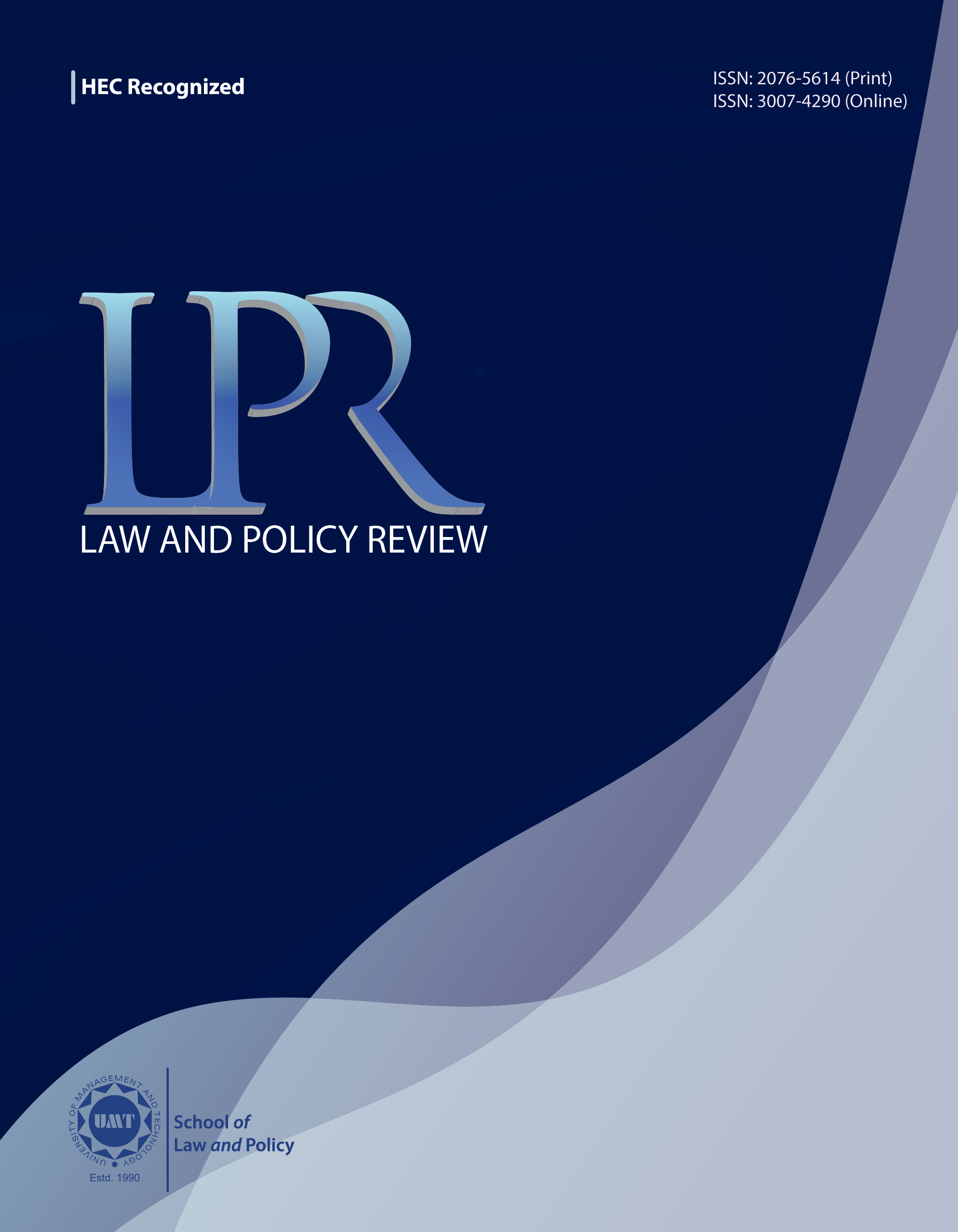Comparative Analysis of the Intellectual Property Rights of Three Former British Colonies of the Sub-Continent- Bangladesh, India, and Pakistan
Abstract
 Abstract Views: 0
Abstract Views: 0
The study examined the intellectual property rights, judicial effectiveness, and freedom of investment in the three British colonies of Asia-Pakistan, India, and Bangladesh. The aim of the study was to assess the progress these countries have made in protecting intellectual property rights, enhancing judicial effectiveness, and promoting freedom of investment. For this purpose, the researcher collected data from two international platforms: the International Property Right Alliance and the Economic Index of The Heritage Foundation, covering the last ten years excluding 2024, due to the unavailability of data for that year. Researcher comparatively analyzed the data from 2014-2023 on the protection of intellectual property rights, judicial effectiveness, and freedom of investment. Based on the analysis, the researchers concluded that the protection of intellectual rights is strongest in India, followed by Pakistan, and then Bangladesh. Using a seven-point Likert scale, India was found to be at the middle level of protection, Pakistan at middle to low level and Bangladesh at the lowest level of protecting intellectual rights. However, there is a negative significant relationship found between the protection of intellectual property rights and judicial effectiveness, but there is a positive significant relationship between freedom of investment and protection of intellectual rights.
Downloads
References
Auriol, E., Biancini, S., Paillacar, R., Gourdon, J., & Savoye, B. (2022). Intellectual property rights protection and trade: An empirical analysis. Éditions Agence Française de Développement. https://shs.cairn.info/journal-afd-research-papers-2022-240-page-1
Baijou, A., & Aguenaou, S. (2016). Impact of economic freedom, piracy losses, and intellectual property rights on foreign direct investment: evidence from mena countries. ACADEMICIA: An International Multidisciplinary Research Journal, 6(2), 119–132.
Chen, Y., & Puttitanun, T. (2005). Intellectual property rights and innovation in developing countries. Journal of Development Economics, 78(2), 474–493. https://doi.org/10.1016/j.jdeveco.2004.11.005
Cychosz, A. (2003). The effectiveness of international enforcement of intellectual property rights. Journal of Marshall Law Review, 37, 985–1016.
Falvey, R., Foster, N., & Greenaway, D. (2006). Intellectual property rights and economic growth. Review of Development Economics, 10(4), 700–719. https://doi.org/10.1111/j.1467-9361.2006.00343.x
Hammami, S. (2019). Foreign direct investment inflows, intellectual property rights and economic freedom: Empirical evidence from middle-and low-income countries. African Journal of Science Technology Innovation and Development, 7(2), 1–11. https://doi.org/10.1080/20421338.2019.1587909
Idris, K. (2003, February 12). Intellectual property: A power tool for economic growth. World Intellectual Property Organization. https://www.wipo.int/pressroom/en/prdocs/2003/wipo_pr_2003_337.html
Karim, D. M. R., & Billah, M. (2021). An analysis on the protection of property rights and the intellectual property rights: Comparison between Bangladesh and China. International Journal of Scientific and Research Publications, 11(2). 268–276. https://doi.org/10.29322/IJSRP.11.02.2021.p11032
Kenton, W. (2024, May 10). What are property rights and why do they matter? Investopedia. https://www.investopedia.com/terms/p/property_rights.asp
Khan, M., & Samad, G. (2010). Intellectual property rights and foreign direct investment: Analysis of 14 South East Asian countries, 1970-2005. Applied Econometrics and International Development, 10(1), 219–230.
Li, Q., & Pei, J. (2024). Judicial protection of intellectual property rights and manipulative behaviors in corporate research and development expenses. Finance Research Letters, 65, Article e105611. https://doi.org/10.1016/j.frl.2024.105611
Mansfield, E. (2000). Intellectual property protection, direct investment and technology transfer: Germany, Japan and the USA. International Journal of Technology Management, 19(1-2), 3–21. https://doi.org/10.1504/IJTM.2000.002805
Maskus, K. E. (2000). Intellectual property rights and foreign direct investment (Policy Discussion Paper No. 0022). Centre for International Economic Studies. https://www.iatp.org/sites/default/files/Intellectual_Property_Rights_and_Foreign_Direc.htm
Saravia, A., Canavire-Bacarreza, G. J., & Rios-Avila, F. (2017). Intellectual property rights, foreign direct investment and economic freedom. Global Economy Journal, 17(2), Article e20170017. https://doi.org/10.1515/gej-2017-0017
Tag, M. N., & Degirmen, S. (2022). Economic freedom and foreign direct investment: Are they related?. Economic Analysis and Policy, 73, 737–752. https://doi.org/10.1016/j.eap.2021.12.020
Zheng, P., Li, Z., & Zhuang, Z. (2023). The impact of judicial protection of intellectual property on digital innovation: Evidence from China. Finance Research Letters, 58, Article e104257. https://doi.org/10.1016/j.frl.2023.104257
Copyright (c) 2024 Muhammad Haris Abbas

This work is licensed under a Creative Commons Attribution 4.0 International License.
LPR follow an open-access publishing policy and full text of all published articles is available free, immediately upon publication of an issue. The journal’s contents are published and distributed under the terms of the Creative Commons Attribution 4.0 International (CC-BY 4.0) license. Thus, the work submitted to the journal implies that it is original, unpublished work of the authors (neither published previously nor accepted/under consideration for publication elsewhere). On acceptance of a manuscript for publication, a corresponding author on the behalf of all co-authors of the manuscript will sign and submit a completed the Copyright and Author Consent Form.





